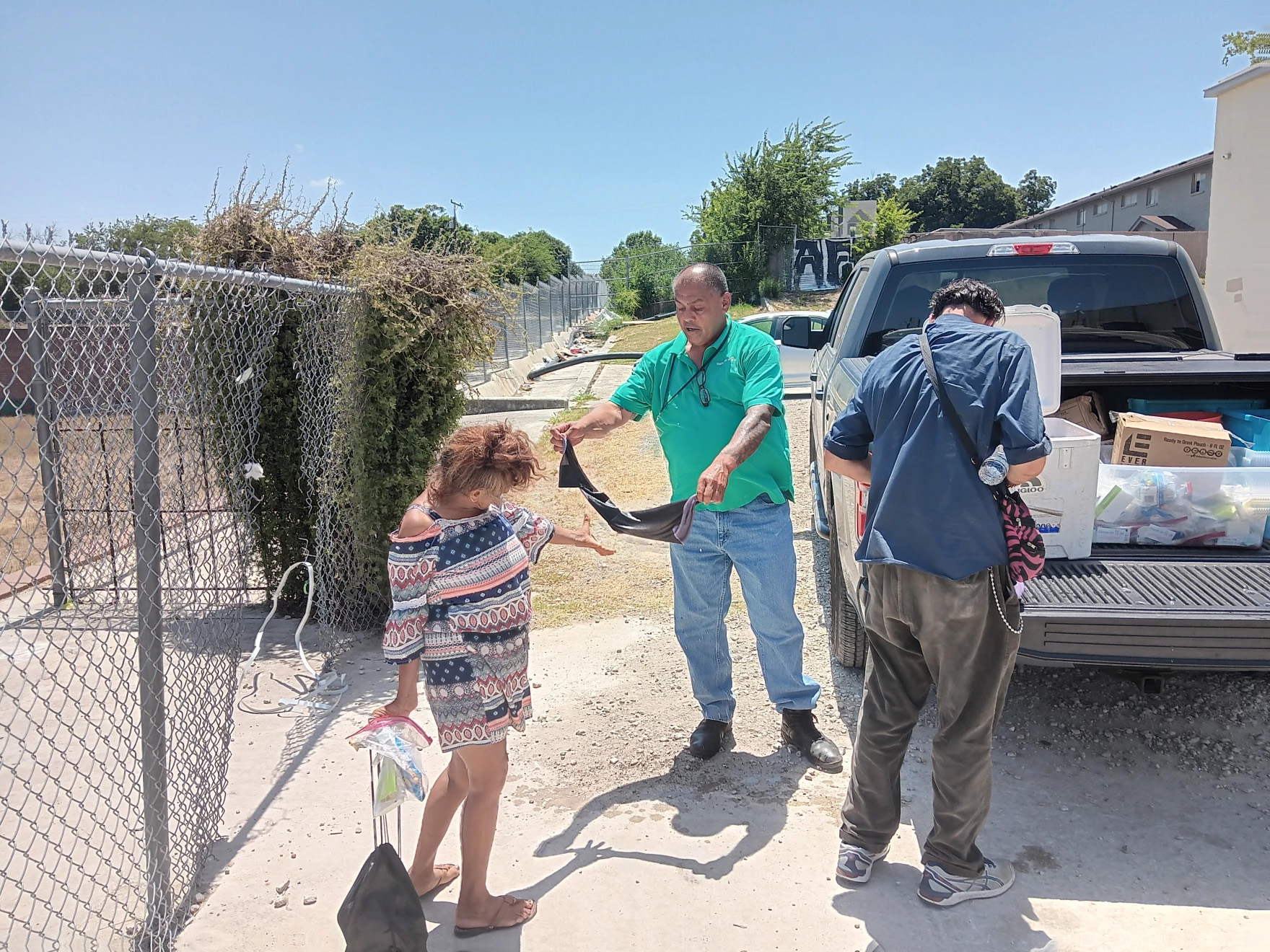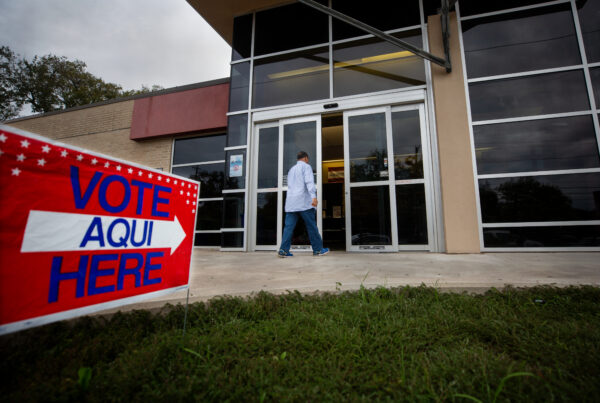From Texas Public Radio:
Pete Barrera is the outreach coordinator for Haven for Hope. As a former heroin addict in recovery, he knows the back streets and alleys of San Antonio. His goal is to convince the unsheltered to come to Haven for Hope for their housing services.
Many of the people he meets on the streets are reluctant to join a program and follow its structure. But every day he meets the unhoused where they live, providing help and building trust.
“It can be tough out here. They may not like it when someone walks up to them and starts asking questions — ‘how you doing’ and stuff like that. They don’t know who you are and where you’re from or if you’re the police,” he explained. “On the first encounter, I just give them the hook up with the water, and I don’t even ask their name. Then next time, maybe you get a name or maybe not.”
In July, he visited a homeless camp off Fredericksburg Road behind a Dollar Tree and a plasma center. He honked his truck’s horn with three short bursts.
“They know me already,” he said. “They recognize the truck.”
The people who live in the concrete drainage ditch emerged through an opening in the chain link fence that’s been pulled apart to make an easy portal from one world to another.
“There’s a guy down there that I only know him as ‘Monster.’ I don’t even know his real name or I forgot it,” Barrera said.
Here, names are as fluid as the living accommodations. Real names are for people who have lives attached to the system, and these are people who have decided they don’t want to be part of that.
The shirtless man known as Monster stepped through the fence hole. He’s midsized but seemed to be all muscle with arms that appear to belong to a larger man — only his smile is bigger. He’s grateful for Barrera’s visit and the hook-up of cold water, sports drinks and snacks. He grabbed his share while excitedly chatting with Barrera about nothing and then walked back down the gulley.
After Monster left, the other residents came forward.
Another man goes by Frenchie. He’s been at the camp since October when he lost his house after his wife died.
He’s now living under a tarp tossed over some shopping carts because his tents keep getting stolen.
“It’s rough, man. I had a tent, and three times they stole my whole tent from me.”
Frenchie said a constant breeze channeled by the drainage ditch makes the heat manageable but these conditions are still dangerous, explained Dr, Rita Espinoza, the chief epidemiologist with San Antonio Metropolitan Health Department.
“In just one week, there were 60 individuals who EMS was called out to help for heat related illness. So we know that those numbers are increasing,” she said. “And the higher the temperature for that week, the more incidences that we’re seeing. So I think the message really needs to be on prevention so that we’re not continuing to see these high numbers.”
Metro Health reported that this summer has been the most dangerous in terms of heat-related illnesses in San Antonio. Four of the past five weeks ranked as the worst for heat-related illness since 2018.
“We saw the numbers grow in June — compared to last year they are almost double,” she said.
Many in San Antonio are struggling with the heat. Older homes without insulation can be difficult to keep cool. Many can’t afford to run air conditioning if they have it.
Mario Martinez, Metro Health’s assistant director, said city cooling centers are providing some relief.
“One of the things that we focus on as a city is to ensure that we have multiple places to stay cool in our neighborhoods where we see sort of a higher equity score. And these are neighborhoods that historically have been marginalized,” he explained.
Martinez added that there are city libraries, community centers, and public pools that provide a break from the heat which even for a couple of hours can make a lifesaving difference.
“We believe is very important is for residents to look out for those neighbors,” he said. “It is during this time that it’s important that we check in on them [and] get them through this extreme heat.”
That’s what Barrera is doing at the homeless camp.
He talked to an elderly woman named Miss Rose. She was stooped over and frail, and her skin was a dark tan — baked from the South Texas summer sun. He tried to convince her to go to the Haven for Hope’s facilities. They’ll work on getting her an apartment, he said.
But she said she wasn’t ready. Maybe tomorrow, she said, she’ll go.














